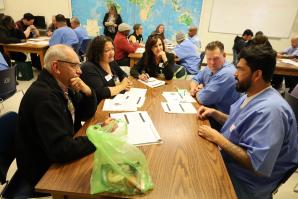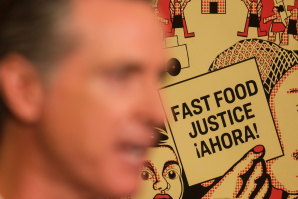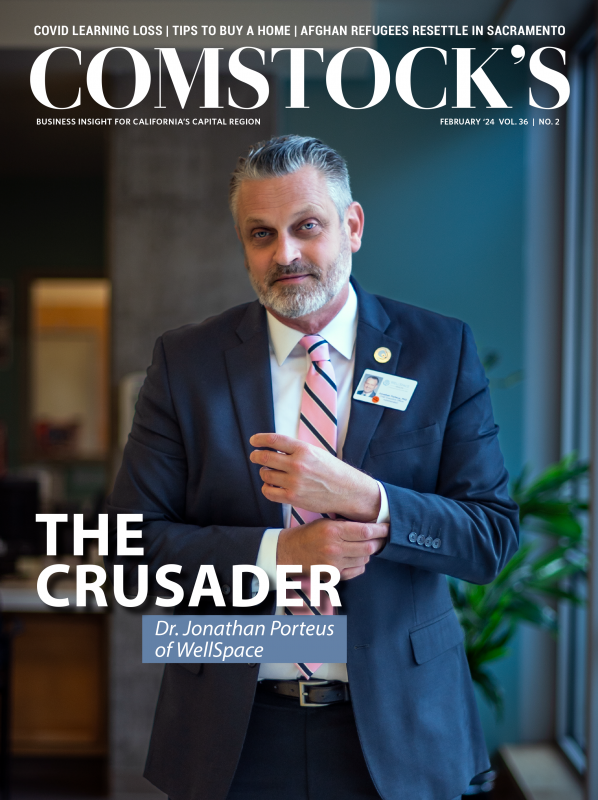Most of us would agree that the purpose of a school — whether it’s public, private, chartered or at home — is not teaching students what to think but rather how to think.
This is why education at its best is a mirror of America’s history, not its guide. Its dynamics have changed to accommodate our country’s expansion — and even our occasional contraction, which occurred during the COVID era, emptying our schools preemptively. To adapt a current phrase, those were four semesters our kids will never get back.
And, may I say, the problem was compounded when kids got the chance to go back to the classroom (at the same time adults were cleared to return to their workplace), and far too many concluded that staying home seemed like a better idea.
The pandemic wasn’t solely to blame for student desertion. In some cases, parents didn’t want their children to go back to an environment they believed was addressing topics that were best handled in the home, not in the public, peer-pressured setting of school.
While arts and physical education made it into the schools, education in the early days of the United States focused on pragmatism and practicality — on understanding the agricultural economics of an agrarian nation. In time, we became an industrial and manufacturing economy, then a service sector and white-collar economy. We’re clearly in an information age and digital economy now, with artificial intelligence making inroads into every course of study — even if you’re hoping to become a lawyer, physician, journalist or auto mechanic.
Artificial intelligence, those dreaded words, is education’s latest interrupter. But maybe that’s not entirely a bad thing if we realize its limitations — and why it’s become so attractive as a kind of cosmic shortcut to not only “busy work” tasks but, increasingly, to those things that require critical thought. And this is where we come back to the point with which I started this month’s letter — that schools are there to teach students how, not what to think.
Some people feel that AI could flourish in the education sector because we stopped creating education systems that encourage and place value on our greatest and rarest gifts as people: intelligence. AI doesn’t think. It imitates thinking. In a sense, it’s an executive’s cyber assistant, not the executive. And unlike many an executive’s human assistant, it will never learn enough about the human element of setting and carrying out policies. Only humans can do that.
A friend in the education sector says that teachers are now being pushed to become AI cops. They have to somehow decide whether students are using AI to write their papers and do their homework. This will lead to problems for business people and what we call the professions (medicine, law, accounting). Will the college graduates they recruit have excelled at school on their own or with cyber help?
I think AI is going to do much more than just allow cheating. Likely, it will dumb down a big percentage of our student population even further (particularly those that are less serious about learning and more serious about just getting on with life). Many students may not think they need to study at all with AI at their fingertips.
You have to ask — where is public education headed? We explore that a little in this issue, but in the meantime, I’ll share with you that the growth of charter schools may be laid directly at the doorstep of public education’s failure in many areas. In fact, as of this writing, California has 1,300 charter schools serving well over 600,000 students; this is more than a tenth of all the kindergarten-through-12th-grade kids in the state. There are even seven all-charter school districts.
What would you like to see happen with education in California and the nation? Of course, we live in a precedent-making state, even if it’s sometimes for the wrong reasons. Do you think AI is an answer or merely a tool? Whichever, it’s not going away anytime soon. It has the potential to having excellent value for teachers in streamlining their courses, but many say that currently, safety and security remain two major problems in AI’s implementation. After you read this issue, please share your thoughts with us. One thing we know and respect about our readers is they know how to think!
Winnie Comstock-Carlson
President and Publisher
–
Stay up to date on business in the Capital Region: Subscribe to the Comstock’s newsletter today.
Recommended For You

A Time for Inspiration
Why do we so often abandon our New Year’s resolutions? Comstock’s president and publisher Winnie Comstock-Carlson wishes readers a Happy New Year while contemplating the comparative power of inspiration.

Fondly Remembering the Good Ol’ Days
It was the age of the milkman, the gas attendant and free paper bags. Comstock’s president and publisher reminisces about a simpler time before all the automation.

What Does Real Prison Reform Look Like?
Comstock’s president and publisher argues the benefits of inmate education programs.

The Wage of Innocence?
Comstock’s president and publisher reflects on minimum wage and the value of work.

Successful Entrepreneurs Are Innovative Risk-Takers
Comstock’s president and publisher considers the risks involved in becoming a successful small-business entrepreneur — such as starting a magazine with just $2.50 in your pocket.

Sacramento Rising: It’s Our Time
As Walt Kelly’s cartoon possum Pogo said on posters for the first Earth Day in 1970, “We have met the enemy and he is us.” Comstock’s president and publisher considers how the motto applies to California.





